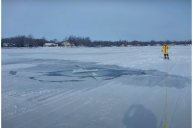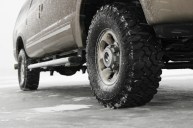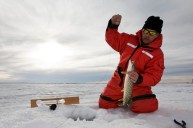As temperatures plummet, and fall turns to winter, ice fishing season - and all that comes with it - looms near.
Ice fishing is a very popular winter activity in the northern half of the United States. While more people fish in open water, ice fishing still draws quite a crowd. Moreover, for those willing to invest the time and resources into the activity, the rewards can be massive.
Perhaps the most important detail to be focussed upon is ensuring the safety of the ice to be fished through. Each year, people fall through ithe ce, and some will die. Here are three tips for ensuring the safety of any ice before spending ample time on it.
Three Tips To Make Ice Fishing As Safe As Possible This Winter
First and foremost, wearing a life vest is a must when ice fishing. At Take Me Fishing, it is emphasized that ice does not freeze in a uniform manner. As is such, the thickness of the ice on a body of water can vary wildly from spot to spot. Wearing a life vest is a surefire way to minimize risks.. Accidents can and do happen on the ice. Wearing a life jacket will keep an angler from sinking deep into the cold water. Floating back to the surface is, and always will be, preferable to the alternative, especially when in shock from sudden exposure to the frigid water.
Second, speaking with local bait shops, resource officers or resort locations about the ice conditions is smart. Local businesses are built on tourism driven by winter activities. Such a relationship with the area makes it that the employees of these businesses are often the most well-informed. Likewise, resource officers are great individuals to check with prior to hitting the ice. Getting the best information prior to a day on the ice will make any angler more well-prepared.
Third, checking the ice for yourself is the only way to really know how safe the ice is on any given day. This is particularly important when fishing older ice, as new ice is generally the safest. The longer that ice has been around, the more dangerous it can be. Checking ice with an auger, chisel or drill with a longer bit is a great way to ensure your own safety when ice fishing.




